The Ricoh GR Digital is by all accounts an elderly digital camera. Released in 2005, it’s been superseded 5 times. This possibly begs the question as to why I’ve just spent £100 on one…?
I’d been looking around for a small compact digital camera for a while when I had an email from Roey Marquis II. Once in a while he emails me links to posts on his excellent blog that he thinks I might find interesting – you can find it on his website here: mingart.de. On this occasion my eye was caught by a blog post about the Ricoh GR Digital – mostly as it contained some lovely black & white images.
I’d actually looked at the full range of Ricoh cameras as part of my search, but had got myself caught in that trap of talking myself up to the latest models. The problem I had – if you’ve ever seen images from the latest two GR cameras with the aps-c sensor – you’ll be aware of how amazing the output it. Images are sharp, but more than that they have a really nice 3D look to them. I remember when they first came out, I wanted one then, but even on the second hand market the value has never dropped low enough for me to buy one on a whim – I’m just not sure I’d use it enough to justify the cost.
This fancy for the latest models had meant I’d found myself dismissive of the earlier cameras. In hindsight, this was daft, as actually “perfect” image quality isn’t really that far up my list of requirements for the camera I felt I wanted to find. As it turns out, even with my cynical attitude toward digital cameras and their never-ending-upgrades, I can still get suckered into the idea that the latest camera will be more right for me compared to the model(/s) it “superseded”. That is at least until someone like Roey sends me a link to his blog that brigs me back to my senses – thanks Roey! Reading his mini-review it became very quickly apparent to me that I really didn’t need the latest and “greatest” in the range, and that actually the first version from 2005 could quite readily tick many of my boxes.
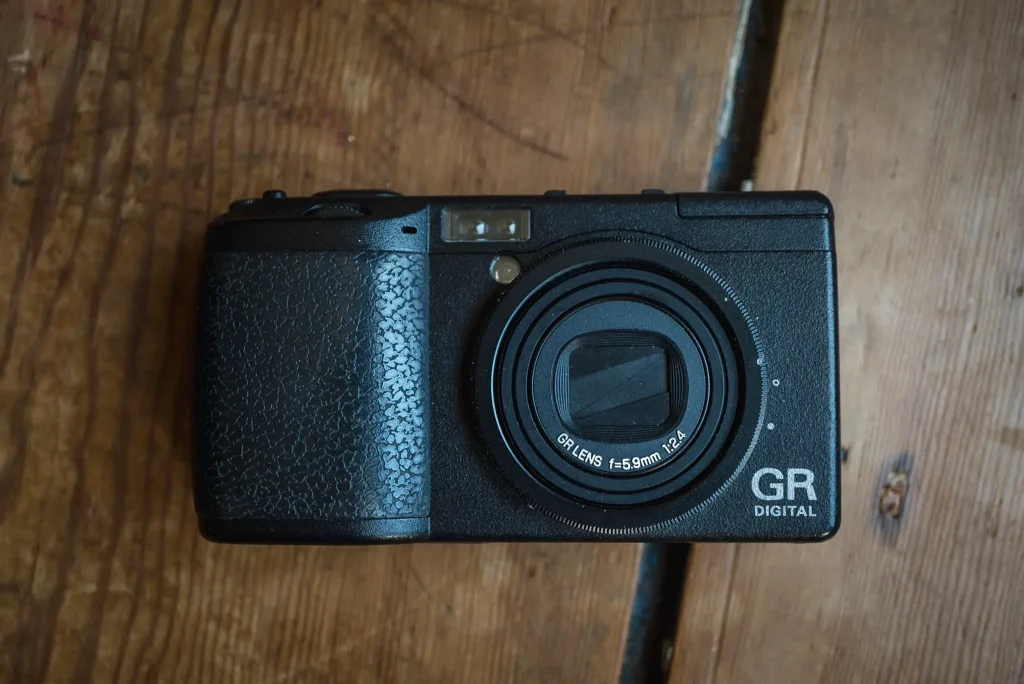
The elusive camera
The camera I’d been searching for was something to just chuck in my pocket when know I’m only likely to take a couple of photos if something catches my attention – I wanted something with a wide angle lens so that I wouldn’t need to think too much about focusing. I have a few film cameras that I get good results from shooting like this, but I can’t always be bothered with film – the allure of a bit of instant gratification once in a while is as strong in me as it is the next man. That being said, as with most who find significant joy in shooting film, I often find the process of shooting digital in this way largely unsatisfying. I have long struggled with this dichotomy, and have only really found a resolution to it in the likes of the Leica Monochrom. You can probably therefore see why the title of Roey’s post initially jumped out at me (it has the word Monochrom in it)… Could this little digital camera provide me with a bit of instantly gratifying, compact, black & white happiness?
A compact Monochrom?
The beauty of the Leica Monochrom is that whilst it’s digital, it also provides me with a satisfyingly simplistic, fairly limiting, and arguably film-camera-like user experience. It’s a very uncomplicated camera to use with very few controls, buttons and options, but it also takes images that work very well for me and my tastes. Unlike many more modern digital cameras, it’s also not near-infinitely forgiving. As such, I have to take some care when I shoot with it.
As someone who shoots rangefinder cameras regularly, I didn’t find it too hard to master, but the slightly old CCD, the heightened tendency to clip highlights, the basic meter and poor screen make for an experience that feels hands-on and considered. As such, I feel like I’m very much a party to the image making process, rather than just letting the camera do all the work and then chimping my way to success. Of course, beyond the word ‘Monochrom’ in the title of Roey’s post, he doesn’t draw any of his own parallels with the Leica cameras that bare that name – but reading what he had to say, I began to join the dots myself…
The Ricoh GR digital in theory
Of course the Ricoh GR digital is actually quite far removed from the Leica Monochrom. For a start, it’s a compact with a comparatively tiny sensor. It also takes colour photos. But reading Roey’s review, it became very quickly apparent that the camera I was reading about – like the Leica Monochrom – was a fairly simplistic and potentially quite limiting bit of kit by today’s standards. This camera isn’t the latest all singling, all dancing camera with many of the modern conveniences and relatively up to date technology inside it. This is a digital camera from a good few years ago, it’s going to have a much more sparse feature set, it apparently suffers from noise as low as 200iso and has issues like slightly slow autofocus. As such, although these aren’t the same limitations the Leica Monochrom brings to the table, it has its own set of limitations that would need to be worked with and around. Additionally – and more specifically like the Monochrom (as is the real crux of Roey’s post) – it looked like it would take organic, attractive and un-clinical black & white photos.
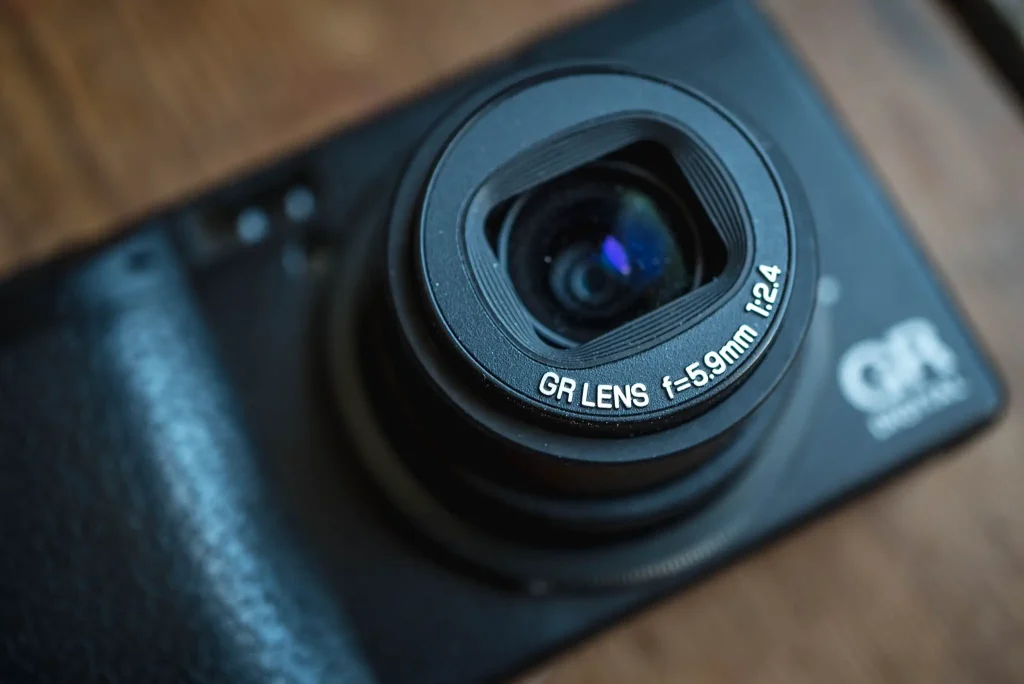
Actually, beyond these fairly tenuous similarities to the Leica, it was some of the broadly different features of the GR digital that seemed like they might appeal to me. I love my Monochrom, but it’s far from my ideal carry everywhere, pocketable point & shoot camera. As Roey talks about in his post, the small sensor brings the benefit of much broader depth of field than a larger-sensor cameras gives you. The snap-focus mode that’s so favoured by those who use the Ricoh GR1 series film cameras is included, but thanks to the tiny sensor, it allows huge depth of field even at the widest aperture allowing very easy, focus-free snaps. It also focuses close, is tiny, light weight and very pocketable. This all started to add up to a camera that had some appeal to me – so as Roey suggested in his post, I bought one from Japan via eBay.
The Ricoh GR Digital in practice
I think the first point of note to make about these cameras is that they are old. They are also made by Ricoh, who have never really been know for ultimate reliability. This particular model is known for an issue that plagues the ‘adj’ button. Press it, and sometimes the camera will hang. In worst cases it hangs every time. There’s loads online about this issue, but I took the risk anyway. Unfortunately, upon opening the box I found mine to have said ‘adj’ button issue. Fortunately, of all the possible fixes I read about via searches on google, the push-it-in-and-wheel-it-back-and-forth-loads-trick seemed to fix it. If you have this issue, I recommend you try that too.
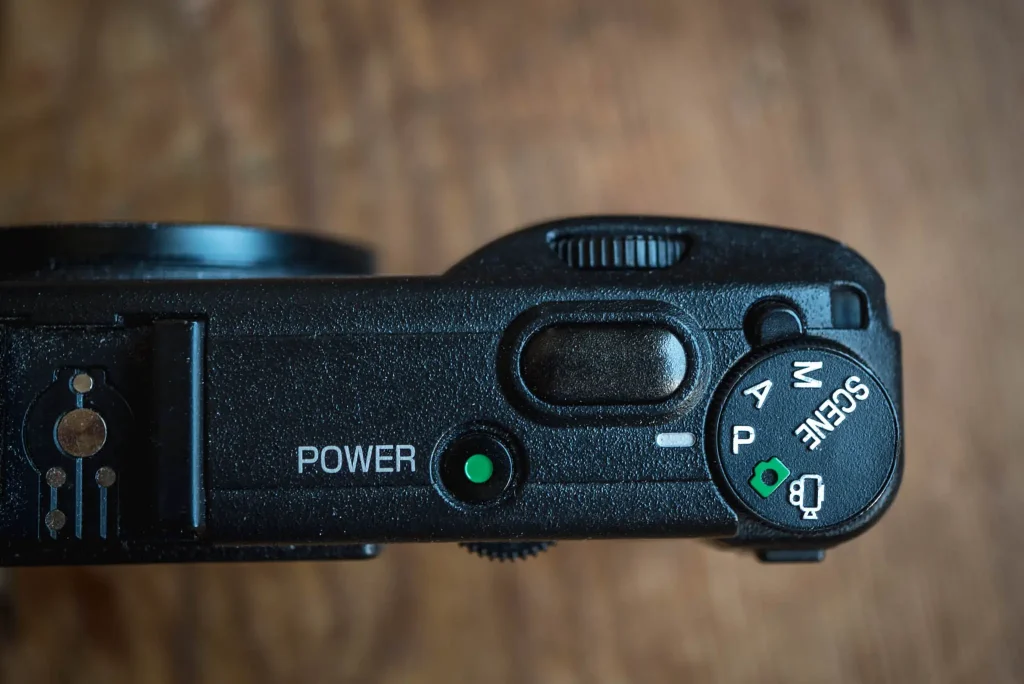
First experiments
The first shots I took with the Ricoh GR Digital were fairly uninspiring. I wanted to see how good it was as a colour photography camera. It’s not awful, but it’s it’s not great either, not by today’s standards. You have to be quite careful with exposure, as it has a tendency to clip highlights in a way that even decent smartphones don’t do these days.
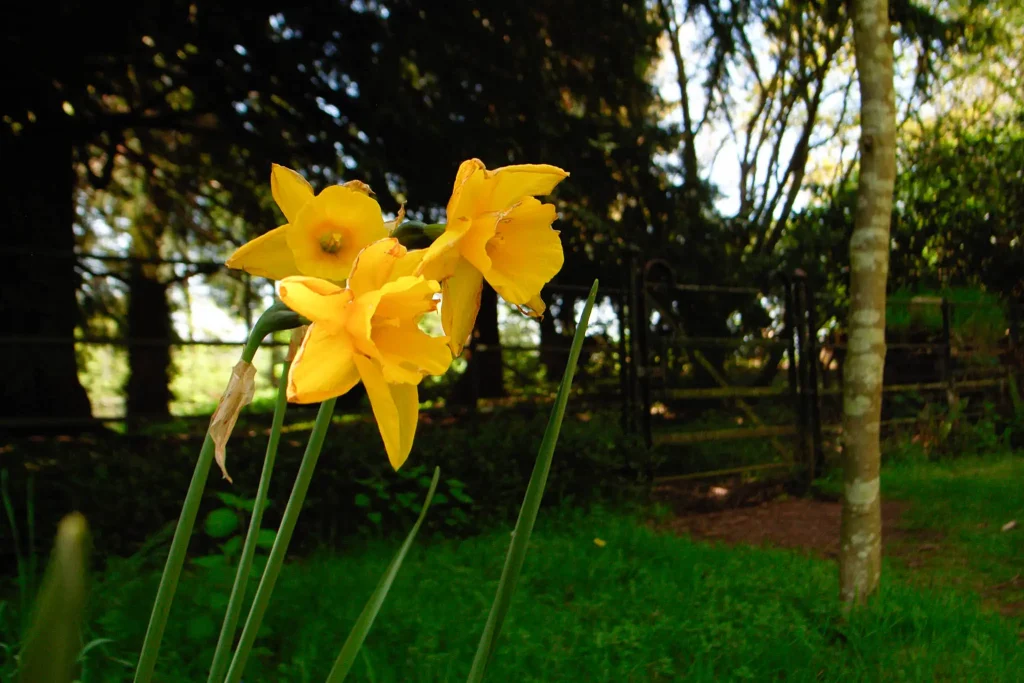
I soon set it to black & white. As I’ve alluded to, a big part of the appeal was how nice the black & white images in Roey’s post looked – the idea of a compact “Monochrom” was very appealing. Shooting a couple of photos, I straight away found that the Ricoh GR Digital was going to provide me with the simple user experience I was after, and even looking at the shitty old screen on the back I could see promise in the results…
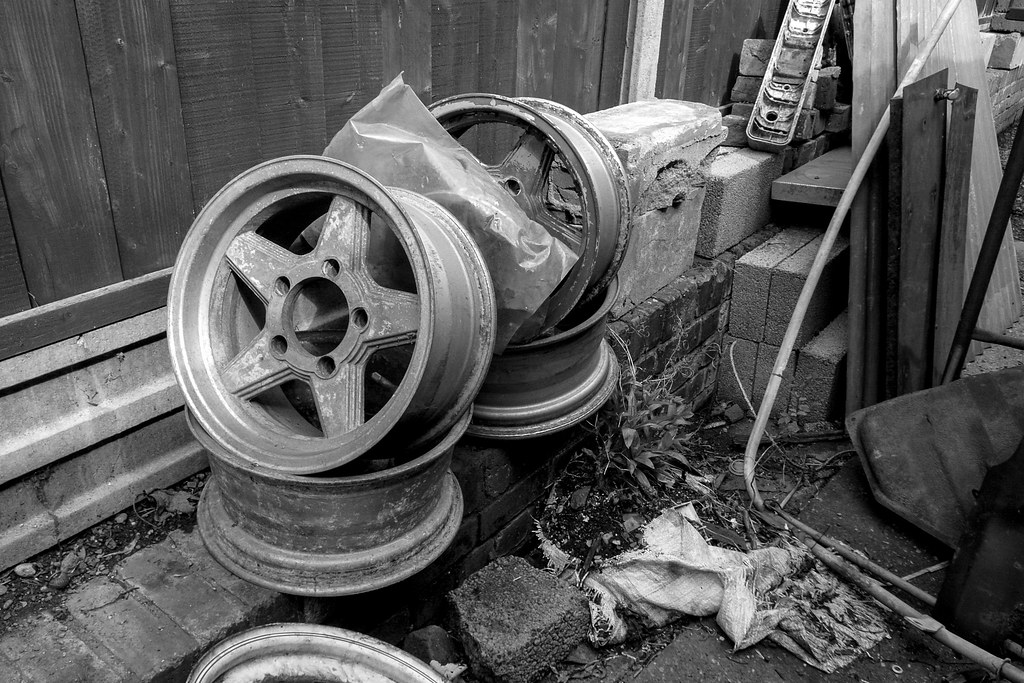
Setting up the camera
After a few experimental shots whilst out for a walk with the familiy, I found a bit of a sweet spot setting the camera to shoot at around 2/3rds of a stop underexposed. This seemed to cut down on the chance of clipped highlights quite nicely. I’ve also switched off the digital zoom which frees up the zoom rocker under my thumb to work as an exposure compensation control. As such, if I want to control the exposure, it’s literally right at my finger thumbtip.
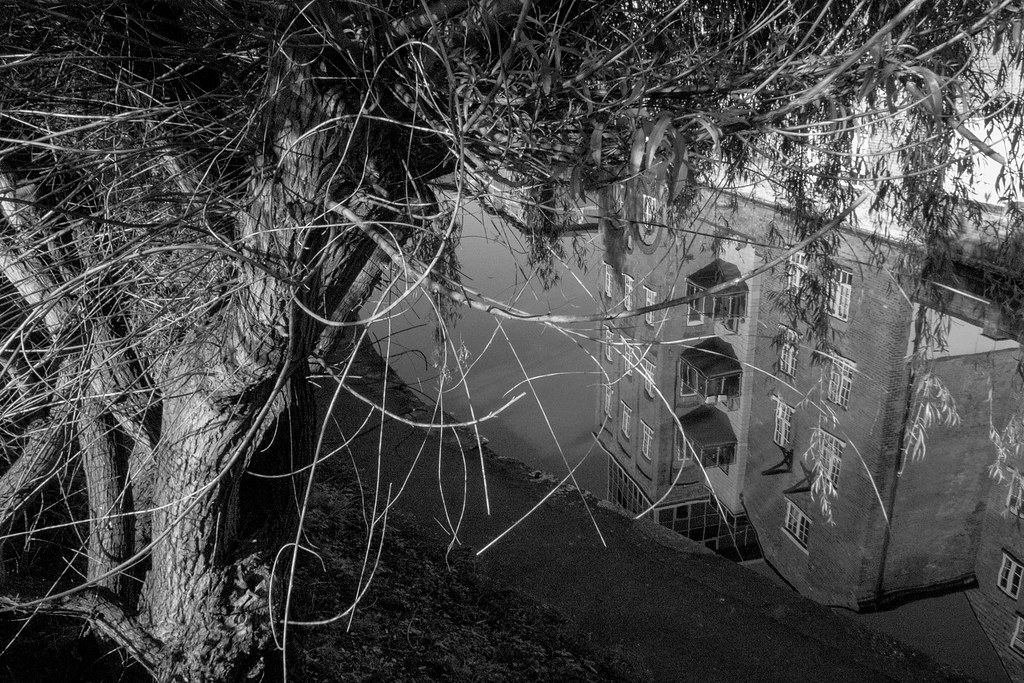
Loads of auto
After a few experiments I found setting it to program-auto worked best for me. Unlike its film counterpart the GR1, the Ricoh GR Digital preferences wider apertures over slower shutter speeds in lower light. Additionally to this, if I did ever decide I wanted a faster shutter speed, smaller aperture or whatever, there’s a wheel on the front of the camera that jogs the program mode. It also has auto-iso which I’m used to using on my Sonys and even my Leica digital cameras, so that was switched on too – I’m never likely to use it in such low light it needs to top end 1600 iso anyway.
Saving the settings
One issue I quickly noticed was that each time I switched the camera off (or it switched itself off) it sets itself back to colour and resets the exposure comp. This was easily rectified by digging about in the (very sparse) menu and saving the settings to one of the settings banks. It can then be set to start up with those settings applied meaning it’s effectively permanently set to shoot in black & white.
Focusing
Funnily enough, despite the warnings in Roey’s post about the slow AF, I’ve not really found it to be an issue in how I shoot it. The snap focus is a lot quicker, but I’ve just not often needed it to be any quicker than it already is. That being said, I’ve set the ‘adj’ button to set the focus mode so I can quickly set it to snap or infinity should I desire.
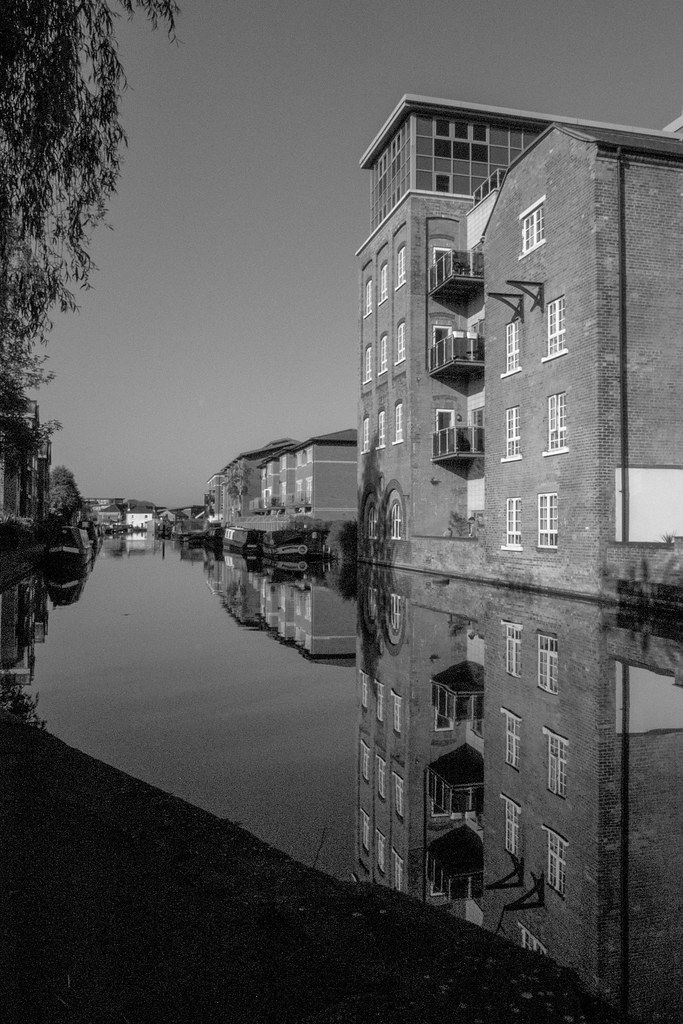
Satisfyingly limited
With the camera set up like this, for my purposes there’s very little I can imagine ever needing that’s more than it offers. It’s fair to say that the Ricoh GR Digital does have its fair share of buttons controls and dials, but really, it’s looks quite bare compared to some of today’s cameras – two of the direction buttons on the back don’t have even functions outside of navigating the menu! In it’s day, this camera was aimed at the pro looking for a pocketable camera. The camera market was different back then – unlike now, all the big brands had large ranges of compact point & shoot cameras with often the defining features between them being a couple extra megapixels or a slightly more powerful zoom. If you wanted manual controls, your main option was the bigger bridge cameras or DSLRs.
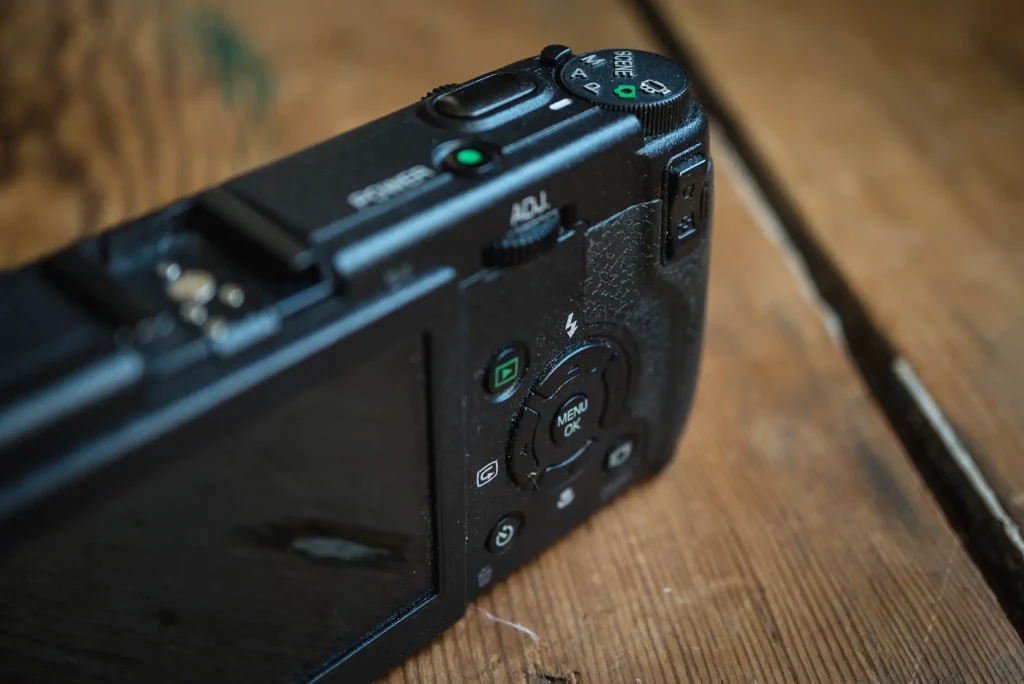
If memory serves, Ricoh had a little bit of a niche with these cameras – they were one of, if not the only manufacturer to offer a camera that provided manual controls in a compact camera in a way that didn’t feel like an afterthought. Of course, many cameras with such features followed, unfortunately, what also followed was 13 years of camera manufacturers over-specifying their camera to the point of ridiculousness. I appreciate I’m in the minority a little with this viewpoint – the comments on my post about the latest Fuji X100f definitely evidence that – but the reality is, as photographers, I’d argue we really don’t need all the bells and whistles. At risk of sounding like a Luddite, we were getting along just fine before all tech we find in cameras today. Using this elderly compact digital has once again highlighted the fact that for me and my photography, I prefer the uncomplicated.
Image quality
As I also expected, what I’ve also found is that I don’t need all the bells and whistles when it comes to image quality either. It might not be bang up to date when it comes to colour photography, but it’s still very capable of good quality images. For one, there’s certainly no doubting the capability of the lens. It seems to be sharp and contrasty without causing any obvious aberrations, especially in black & white where I’ve genuinely not seen anything I would complain about from an optical perspective.
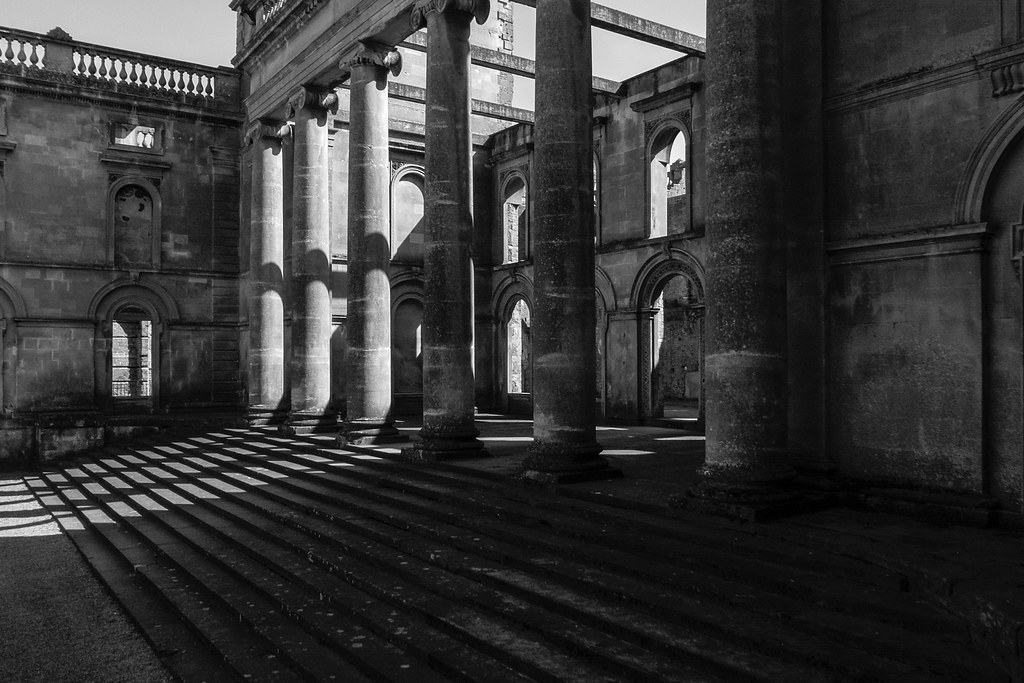
In terms of the output files, set to output black & white Jpeg, I’ve found it very easy to find the tonality in the results that I like with only very slight tweaks in Lightroom. Where there is noise – as Roey points out – it looks and feels organic. He’s correct in that the lack of built in noise reduction in this early model keeps jpeg NR artefacts at bay. What I’ve personally found is that by underexposing slightly, detail is retained in highlights and, whilst it does mean shadows need to be pushed slightly in Lightroom, the noise that this brings out at the lower ISOs only serves to bring a little more character to the images.
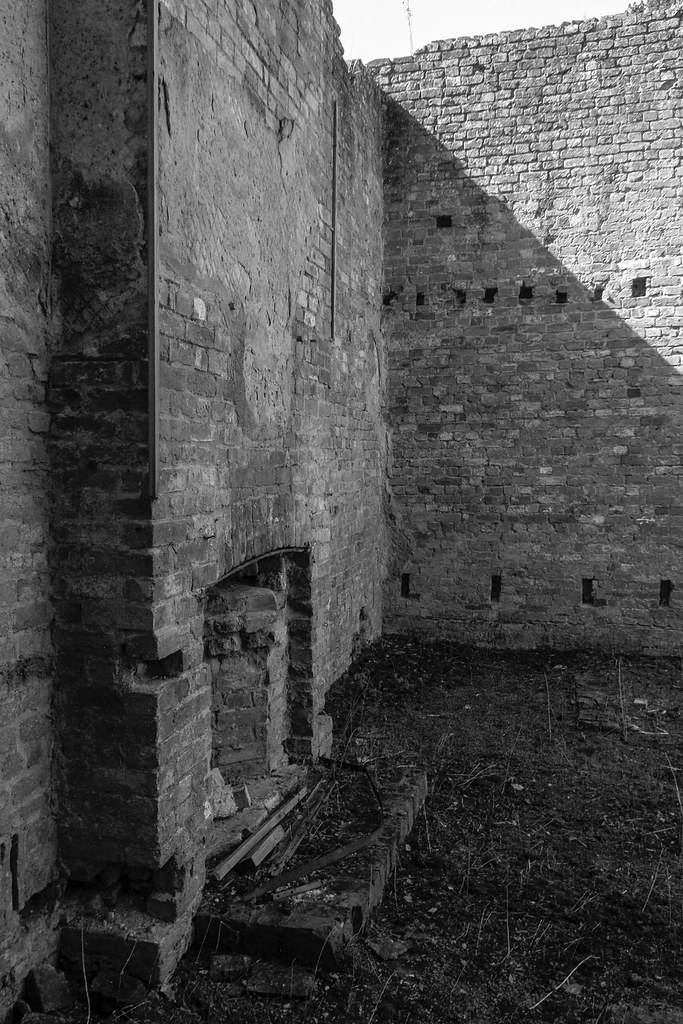
This all said, I’m sure if I wanted a camera for perfect low light photography, for chasing my kids around, or if I needed 4 miles of dynamic range for some fancy colour landscape photography, I would likely hit a wall with the Ricoh GR Digital compared to what can be achieved with modern gear. Low light and fast action photography aren’t impossible, but if you want the noise and blur free images modern cameras can offer in those circumstances, you’re going to struggle with an old camera this.
Fortunately, none of these environments or subject matters are on my list for where or how I want to use the Ricoh GR Digital. For what I want to use this camera for, it fits the bill perfectly. With a similar set of goals, many others would like find the same too. The real shame is: if you want an everything to everyone type camera in terms of image quality, you’ll struggle to find anything as simple, uncluttered and easy to shoot with as the Ricoh GR Digital on the market today.

Skip to the end
You’ll have to excuse the repeated comparisons with the Leica Monochrom throughout this post. Quite evidently, they are very different cameras. The reason I pursued this [gently seeded by Roey’s post title] comparison – at least beyond both cameras ability to provide me satisfying black & white results – was to make a point about the simplicity and elegance of function. There is a parity between the two cameras in the fact that they both offer me solutions to specific shooting goals. Neither Ricoh GR Digital or Leica Monochrom are perfect for every single shooting environment or circumstance, far from it, yet both offer near perfect solutions to particular sets of shooting goals I have. For taking wide angle, broad depth of field, black & white snaps in daylight that have an nice organic, possibly even “film-like” look to them, it really is hard to argue with the “vintage” 2005 version of the Ricoh GR digital. Which is quite convenient really, as that’s pretty much exactly what I was looking for!
Share this post:
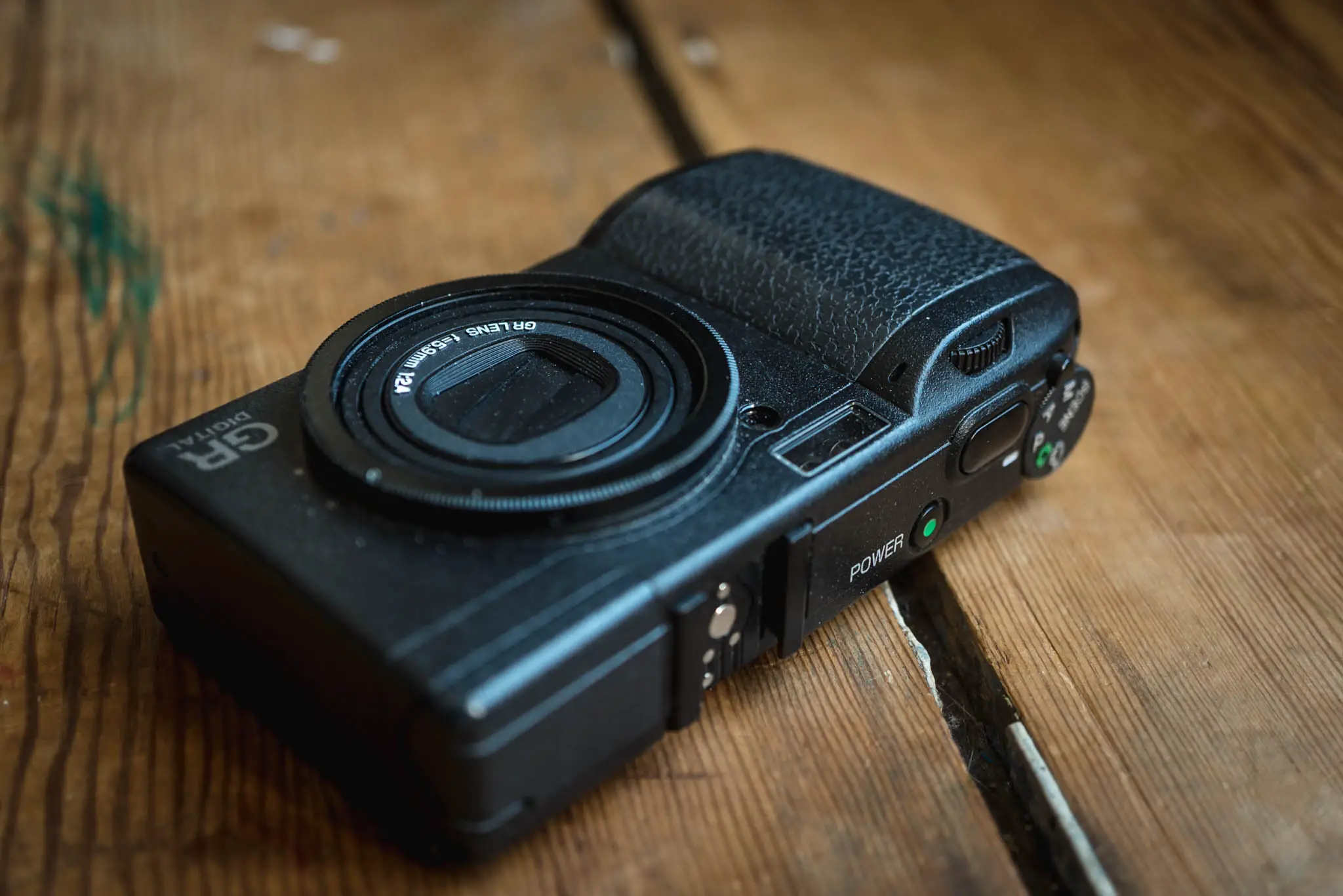








Comments
Carl on Ricoh GR Digital Review – Shooting a Vintage Digital Camera
Comment posted: 14/05/2018
Comment posted: 14/05/2018
J on Ricoh GR Digital Review – Shooting a Vintage Digital Camera
Comment posted: 14/05/2018
jon on Ricoh GR Digital Review – Shooting a Vintage Digital Camera
Comment posted: 14/05/2018
Colin on Ricoh GR Digital Review – Shooting a Vintage Digital Camera
Comment posted: 14/05/2018
Comment posted: 14/05/2018
Comment posted: 14/05/2018
Comment posted: 14/05/2018
Comment posted: 14/05/2018
Alex Hakimi on Ricoh GR Digital Review – Shooting a Vintage Digital Camera
Comment posted: 14/05/2018
Neil on Ricoh GR Digital Review – Shooting a Vintage Digital Camera
Comment posted: 15/05/2018
Comment posted: 15/05/2018
Brett Franklin on Ricoh GR Digital Review – Shooting a Vintage Digital Camera
Comment posted: 15/05/2018
Comment posted: 15/05/2018
Daniel Fjäll on Ricoh GR Digital Review – Shooting a Vintage Digital Camera
Comment posted: 15/05/2018
Well put. Something I've struggled with when shooting digital. Lovely b&w images too!
Comment posted: 15/05/2018
Paul Mulherin on Ricoh GR Digital Review – Shooting a Vintage Digital Camera
Comment posted: 15/05/2018
I took a few monochrome shots of our first son as a baby on my old Sony DSC-W170 and managed to get one onto canvas. The noise appeared more natural grain-like on a CCD (in B/W). Great article! ;-)
Comment posted: 15/05/2018
Michael Penn on Ricoh GR Digital Review – Shooting a Vintage Digital Camera
Comment posted: 16/05/2018
http://michaelpennphotography.com/index.php/product/lonely-new-york-domestic-shipping-included/
Comment posted: 16/05/2018
Michael Penn on Ricoh GR Digital Review – Shooting a Vintage Digital Camera
Comment posted: 16/05/2018
http://michaelpennphotography.com/index.php/2017/09/07/subway/
Comment posted: 16/05/2018
Tim Sewell on Ricoh GR Digital Review – Shooting a Vintage Digital Camera
Comment posted: 17/05/2018
Andrew Swingler on Ricoh GR Digital Review – Shooting a Vintage Digital Camera
Comment posted: 17/05/2018
Why not just your smartphone?
Comment posted: 17/05/2018
Comment posted: 17/05/2018